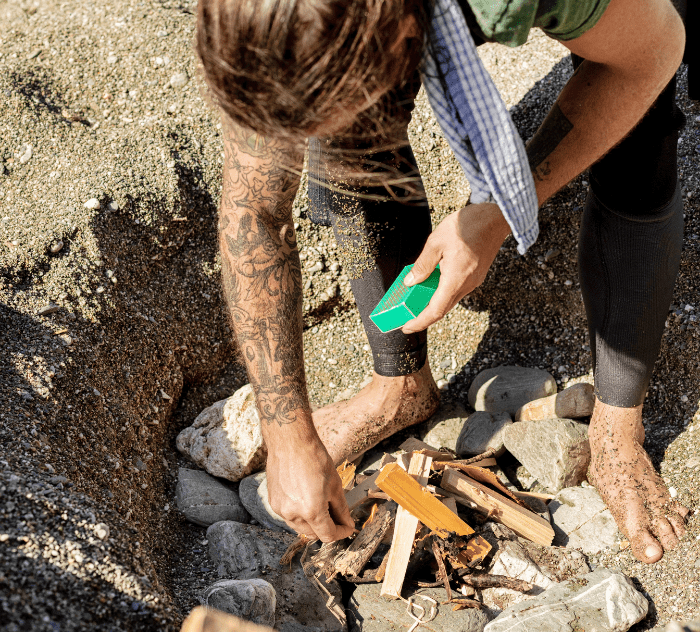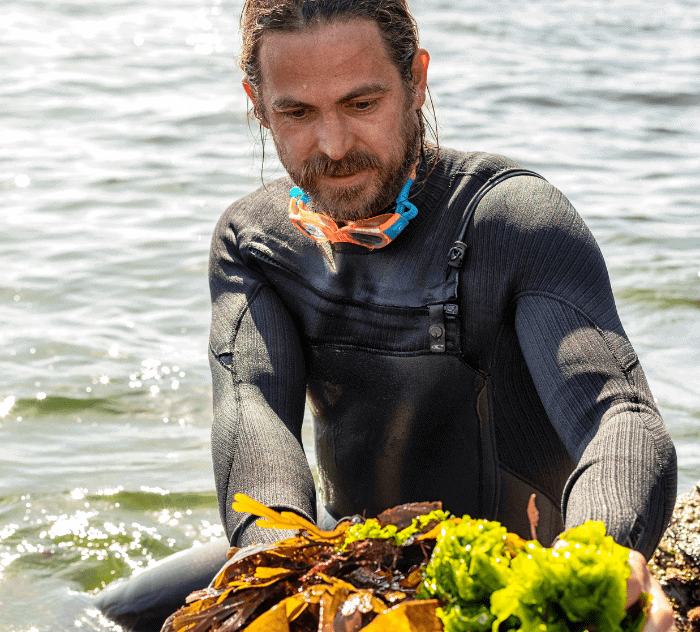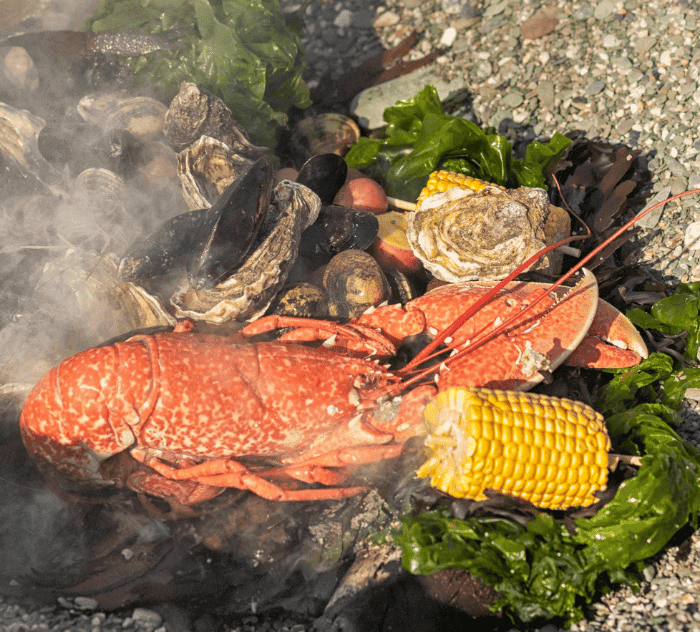Serves 5
Ingredients:
- 1kg (2¼lb) whole lobster
- 6 oysters
- 1kg (2¼lb) clams
- 1kg (2¼lb) mussels
- 5 corn on the cob, husks removed
- 1kg (2¼lb) whole Pink Fir Apple potatoes, or other waxy varieties such as Charlotte or Jersey Royals
Equipment:
- spade
- large flat stones
- tinder
- kindling
- 8 dry, seasoned hardwood logs
- 5kg (11lb) foraged seaweed (optional, see Expert Tips, bottom)
- small knife or scissors
Cornish Clambake Method
- My Cornish clambake involves a quick dive to forage for some seaweed and enough steamed seafood for the whole family. I also like to add crowd-pleasing vegetables to balance the rich shellfish, and the corn and small potatoes used here will steam at the same speed as the clams. This is a way of cooking that gets everyone involved in the process so that the whole family can really enjoy a shared meal.
- Start by digging a large hole in the beach about 1m x 50cm x 50cm (3ft x 20in x 20in). Ideally, try to locate it below the high tide line so that the clambake washes away after cooking. Collect a number of large flat stones (15–20 should be enough, depending on their size) and arrange them in the base of your hole. Try to cover all gaps and lay a good foundation for your fire.
- Build a small fire on top of the stones using some tinder and kindling (fig. a), and once it’s caught add the dry, seasoned logs to build up a large fire. Wait for 40–45 minutes until the flames have died down and you’re left with glowing hot embers.

fig. a - While you’re waiting, forage for the seaweed (fig. b). Use a small knife or scissors to harvest it from below the tide line. Do not pull it from the rocks, as this will damage the plant and ecosystem, or use floating seaweed, as this will be dead and decaying. Try to gather enough to build layers of seaweed in the fire pit.

fig. b - Once the embers are intensely hot in the base of the hole, spread them out across the stones to form an even bed of glowing embers, then add a layer of seaweed on top, followed by the largest of the shellfish – the lobster and oysters.
- Cover with another layer of seaweed, then add the clams and mussels, the corn, and the potatoes on top. You can bake whole fish, sausages, and other vegetables in your clambake, always placing the larger items in the first layer, nearest to the fire where it is hotter. Cover completely with seaweed and then use your spade to cover the whole clambake with sand.
- Enjoy the beach while you wait for 1–2 hours (depending on when you want to eat) for the seafood to cook, then carefully unearth. Enjoy hot and serve with some seaweed butter and crusty bread.
Expert Tips:
- If you don’t live near a beach, you can try a similar technique by digging a pit oven in the ground.
- Wrap your food to protect it from dirt or sand. Here, I’ve used seaweed, but you can use meadow hay, banana leaves for fish or a salt dough crust for a brisket or joint of lamb. You can also add nettles or herbs for extra flavour.
- The longer you cook your food in a clambake or pit oven, the more tender it will be. If the surface of the pit feels too warm to touch, add another layer of sand or soil to keep the heat in.
Recipes extracted from The Artisan Kitchen by James Strawbridge, Published by DK Books, RRP $49.99 AUD/ $55 NZD





